Development of in-vehicle applications using LEDs, such as in-vehicle displays and driver monitoring systems (DMS), is gaining momentum. When designing, many engineers may be struggling with the strict requirements unique to the automotive industry, such as noise reduction, miniaturization, and functional safety.
Analog Devices' LED drivers have excellent performance and are ideal for automotive applications that require precise control. Here, we will introduce LED driver solutions that are especially suitable for automotive displays and DMS.

Extensive Lineup of Automotive LED Drivers from Analog Devices
There are various categories of automotive LEDs. Examples include LED headlights, LED backlights for car navigation systems and center displays, and infrared LEDs (IR LEDs) for DMS.
Analog Devices has a broad portfolio of LED drivers that meet the unique needs of each category. Among them, this time we will focus on in-vehicle displays and DMS, and introduce two types of LED drivers.
MAX25014 LED Driver Solution Optimal for Automotive Displays
First, let's look at trends in in-vehicle displays. In recent years, instruments such as meters and operation panels for air conditioners have become liquid crystals, and the adoption of digital mirrors has increased, so the number of displays installed in cars is increasing. At the same time, car navigation systems and center displays are becoming larger and higher resolution.
As a result, the following challenges have arisen for LED backlight circuits.

(1) Screen flickering when starting the engine
Since the display flickers when the battery voltage drops when the engine is started, it is an issue to solve this problem.
(2) Increase in current value due to screen enlargement
A large screen of 8 inches or more is required, and a circuit that can meet the increasing current value is required.
(3) Limitation of circuit area
With the diversification of in-vehicle applications, the area allotted to each function is limited, making space saving an issue.
(4) Reduction in the number of parts
Demand for cost reduction is becoming more severe, and further reductions in the number of parts are required.
(5) Simplification of circuit design
With the need to get to market quickly, time is running out for complex circuit designs.
(6)Clear EMC standards
In-vehicle equipment, which cannot tolerate malfunction, requires high EMC performance, and noise reduction has become an issue.
Analog Devices offers LED drivers that solve these automotive display design challenges. One example is the automotive backlight driver MAX25014.
Key features include:
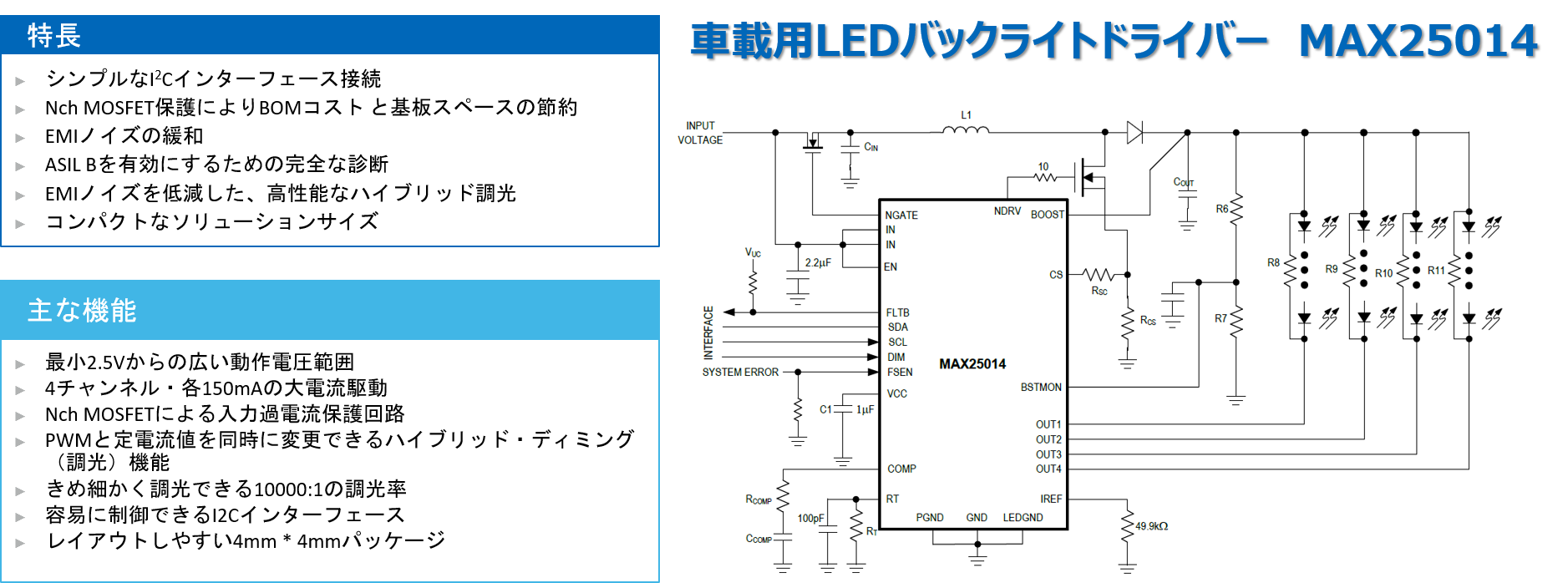
The MAX25014 solves automotive display design challenges as follows:
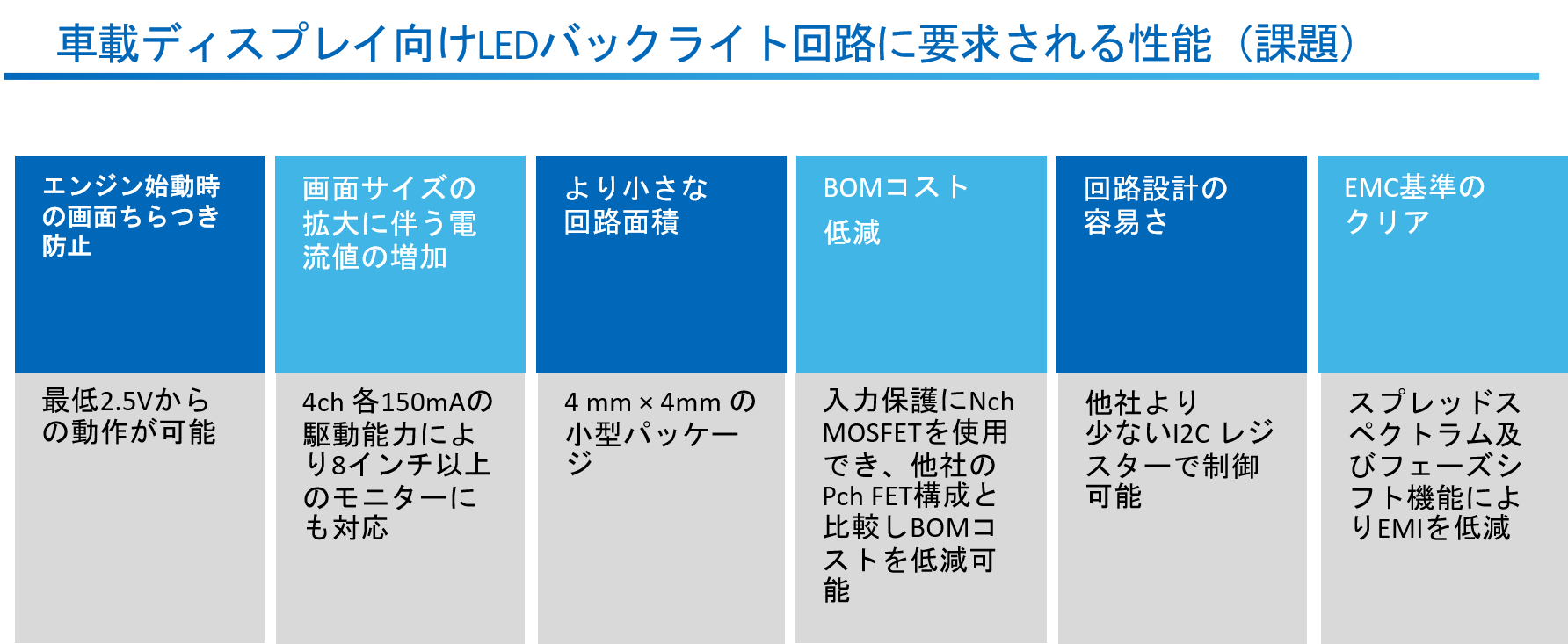
(1) Elimination of flickering when starting the engine
It can operate from as low as 2.5V, preventing display flickering even when the battery voltage is low.
(2) Compatible with large screens of 8 inches or more
Since 150mA of current can be applied to each of the 4-channel circuits, it can be used for large screen displays of 8 inches or more.
(3) Easily reduce circuit area
The package size is as small as 4mm * 4mm, making layout easy even in limited spaces.
(4) Reducing the number of parts by reducing the number of external parts
The boost protection circuit can be configured with a single external component, contributing to a reduction in the number of components.
(5) Simplified circuit design
The I2C register (200bit) with a small number of words reduces the software load during communication and makes circuit design easier.
(6) Clear EMC standards
Electromagnetic noise can be reduced by the spread spectrum function that reduces EMI and hybrid dimming that does not rely on PWM.
We also offer the MAX25024 LED driver with the same features and self-diagnostics for ASIL-B. Large-screen, high-resolution in-vehicle displays can be realized with a small number of design man-hours.
LED Driver Solution "MAX25614" Solves DMS Issues
Next is the LED driver for DMS. The market for DMS, which monitors the driver's condition, is rapidly emerging with the spread of ADAS (Advanced Driver Assistance Systems). Vehicles with autonomous driving level 3 or higher must be equipped with DMS, and Euro NCAP (European New Car Evaluation Program) places great importance on this field, and development is urgent.
Many DMSs on the market today use IR LEDs, which are less susceptible to sunlight. Since it is different from general LED lights, there are various issues with the LED drivers that drive the LEDs. The four major challenges are:
(1) Reduction of peak current
Since the current flowing through the IR LED is frequently turned on and off according to the shooting intervals of 30 fps (frames per second) and 60 fps, the peak current becomes extremely large and reducing it is an issue.
(2) Space restrictions
In order not to affect the interior design, it is often considered to be embedded in the pillar or near the steering wheel, so miniaturization is important.
(3) Prevention of eye damage
In order to prevent damage to the eyes caused by continuous IR LED irradiation, it is necessary to detect and stop abnormalities and to accurately control ON/OFF.
(4) Clear EMC standards
Clearing the EMC standards required for in-vehicle equipment is also an issue for DMS.
Analog Devices offers IR LED drivers that solve these engineering challenges. Here, we will introduce "MAX25614" as an example. This product is a second-generation solution in the same family with built-in functions to solve these issues.
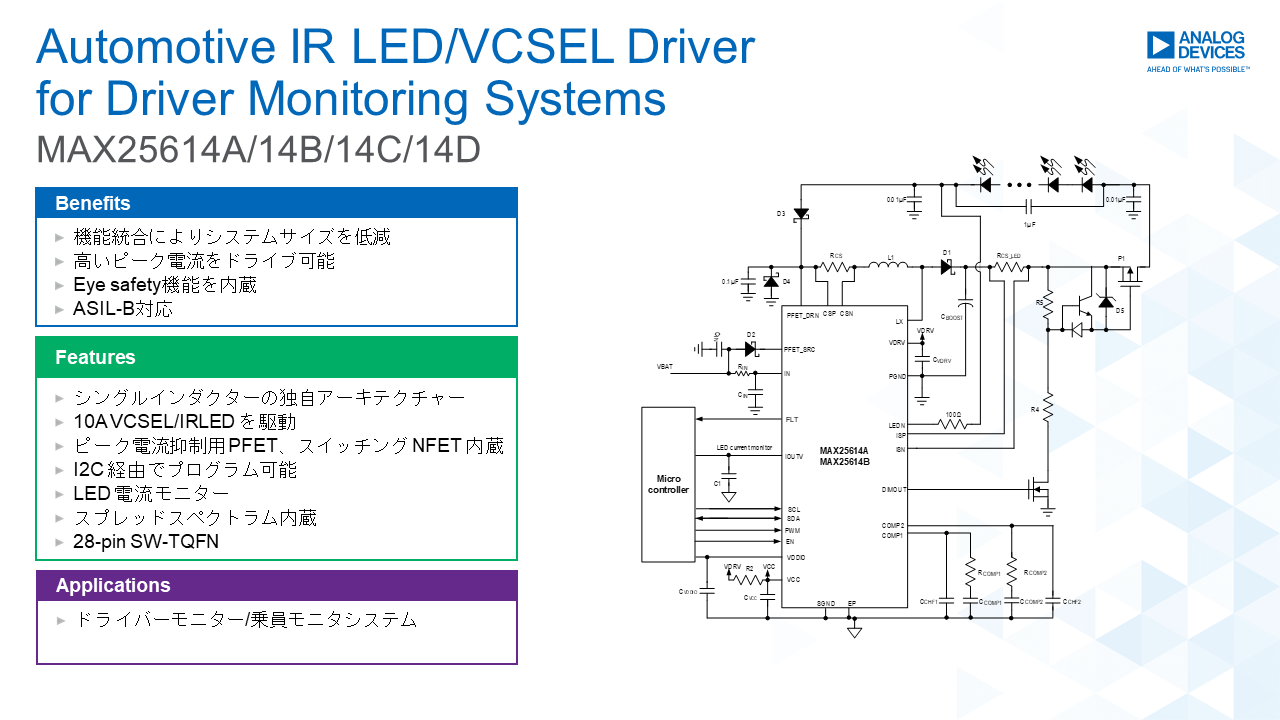
< MAX 25614 Main Features >
(1) Buck-boost topology that supports a wide range of input voltages
(2) Built-in FET in the input stage to reduce input current with ADI's proprietary technology
(3) Diverse protection functions for LED short and open
(4) Spread spectrum function to reduce EMI
By adopting the automotive IR LED driver "MAX25614", DMS development issues can be solved as follows.
(1) Reduce high peak current
Integrated FETs in the input stage allow a significant reduction in peak current. Compared to other companies' solutions, we have achieved a reduction to about one-fifth. Costs can be controlled by reducing cable size and connector pin count.
(2) Significant reduction in circuit area
The evaluation board design has succeeded in reducing the area by about 85 % compared to the previous generation. The buck-boost configuration that integrates buck-boost into a single device and the built-in FET and peripheral components contribute to a significant reduction in overall circuit size.
(3) Ensuring eye safety
Equipped with a full range of protection functions, including current control and monitoring functions. Reliably control IR LEDs and protect your eyes from damage. It also supports the functional safety standard ASIL-B.
(4)効果的にノイズを低減
Noise can be greatly reduced by suppressing peak currents using FET built-in technology. A spread spectrum function is also provided to reduce EMI.

With the MAX25614, a small, high-performance DMS can be quickly realized and brought to market. If you have any problems with DMS design, please feel free to contact us.
Evaluation boards are provided for all of the solutions introduced, so you can easily try them out. If you want to evaluate the performance or are interested, please contact us now.
Application example
・Driver monitor
・Head-up display
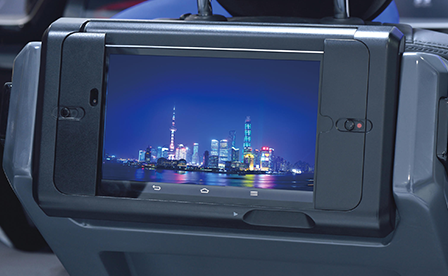
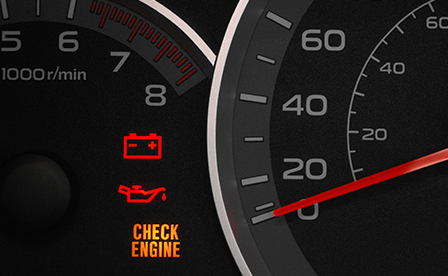
Click here to purchase products
Click here for manufacturer site/other related links
- MAX25014 Series Introductory Video (Click Here for Product Data Sheet)
- MAX25614 Series Introductory Video (Click Here for Product Data Sheet)
- CN0410 Compact and High-Performance LED Driver: ADI's Convenient Practical Circuit
- LED driver "LTM8042/LTM8042-1" with maximum 1A and 3000:1 PWM dimming
- Let's use LTspice - How to estimate the capacitance of a capacitor in a constant power circuit
Inquiry
If you have any questions regarding this article, please contact us below.
Analog Devices Manufacturer Information Top
If you want to return to Analog Devices Manufacturer Information Top, please click the button below.
